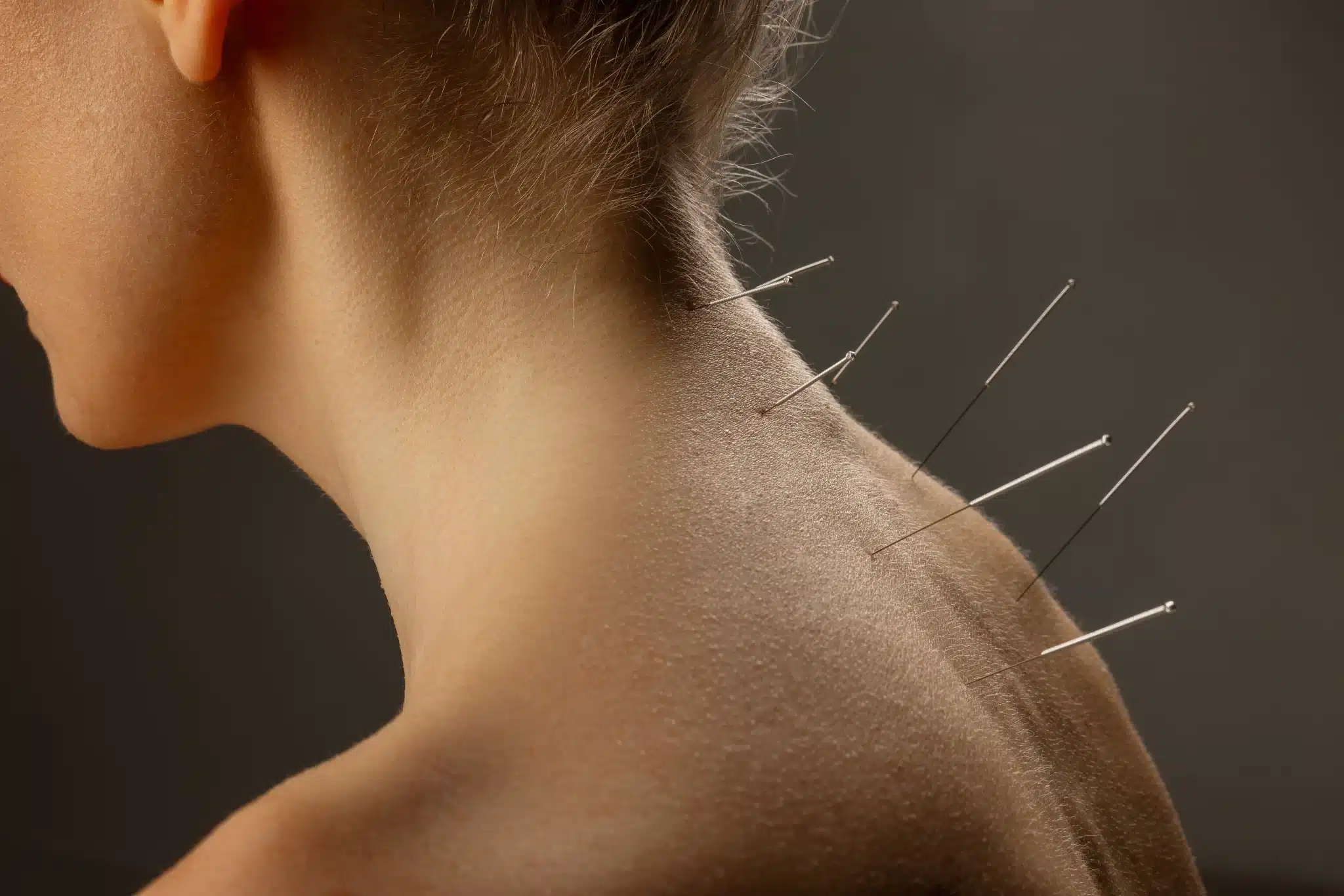Finding the cause of back pain can be tough. But tools like the PainSpot, made by Dr. Douglas Roberts, a clinical rheumatologist, can help. This tool lets people find out why they're in pain by asking a few questions. It's like what doctors do to figure out what's wrong.
Blackberry Clinic is known for dealing with muscle and bone problems. They know that almost eight out of ten adults have back pain at some point. They offer detailed checks to find and fix the pain's source. They help everyone, from athletes to regular folks, find relief from back pain.

A detailed anatomical illustration showcasing a human silhouette with highlighted areas indicating lower back pain, featuring a gradient color scheme to represent varying levels of discomfort, surrounded by common symbols of relief such as ice packs, heat pads, and stretching exercises.
Key Takeaways
- The PainSpot tool, created by Dr. Douglas Roberts, helps individuals locate the source of their lower back pain.
- Blackberry Clinic specializes in treating musculoskeletal issues, including back pain, sports injuries, and arthritis.
- Full assessments at Blackberry Clinic aid in the accurate diagnosis and treatment of pain.
- Testimonies from athletes like Rio Ferdinand and Steven Gerrard highlight significant improvement post-treatment.
- Immediate medical attention is recommended for severe low back pain, particularly when accompanied by other troubling symptoms.
Understanding Lower Back Pain
Lower back pain affects nearly 39% of adults in the United States at some point in their lives. It's a big reason for missed work and can feel like a dull ache or sharp, burning pain. This pain often comes from soft tissue, bone, discs, or nerves in the lumbar region. It's identified by the ICD 10 code *M54.51*, known as vertebrogenic low back pain.

An anatomical illustration focusing on the human spine, highlighting the lumbar region with a detailed view of vertebrae, discs, and surrounding muscles, showcasing areas affected by vertebrogenic low back pain; a color palette of soft blues and greens to convey a sense of calmness and clarity, with an emphasis on anatomical precision and educational value.
What is Lower Back Pain?
Lower back pain is a common issue, especially among adults. It can feel like a small ache or a bigger pain in the back. Acute back pain lasts less than six weeks and can come from trauma, movement, posture, or changes like pregnancy or menstruation. Chronic back pain, lasting more than 12 weeks, often needs medical help.
Common Causes of Lower Back Pain
The lower back can face many problems, each causing pain in different ways. Common causes include:
- Inflammatory conditions - Arthritis of the spine or other inflammatory issues can cause substantial lower back pain.
- Age-related wear and tear - Conditions like degenerative disc disease or spinal stenosis are prevalent among older adults.
- Poor posture - Improper sitting or standing posture can lead to muscle strain and pain over time.
- Sudden trauma - Accidents or sports injuries can result in acute pain that requires immediate care.
It's also important to consider a lower back pain differential diagnosis to rule out more serious conditions like cancer or spinal infections. A comprehensive approach to diagnosis, including imaging tests and medical history, helps find the cause. This way, we can offer effective treatment options.
Understanding the many causes of lower back pain shows why it's key to see a healthcare professional early. Whether the pain is short-lived or lasts long, finding the cause is vital for relief and health.
Role of a Lower Back Pain Locator
A lower back pain locator is key in finding where the pain is. Over half of adults have back pain, making these tools very important. They help those with burning or hurting lower back or trouble standing straight to find the cause.

A detailed anatomical illustration of a human lower back, highlighting the lumbar region, with a focus on pain points illustrated through visual indicators like glowing areas or red highlights, set against a calming background.
How Does a Pain Locator Work?
A pain locator, like PainSpot, guides users through a self-check. They enter their pain and symptoms. Then, the system analyzes this to suggest possible causes. This is great for those with back pain that seems to come and go.
It helps figure out what makes the pain worse. This could be standing up or doing certain activities. Knowing this can lead to better diagnosis.
Benefits of Using a Lower Back Pain Locator
- Accurate Self-Diagnosis: These tools give a first guess at what's wrong, speeding up treatment.
- Informed Consultations: They help users talk better with doctors, making sure nothing is overlooked.
- Time Efficiency: They cut down on doctor visits by clearly showing the problem.
Knowing about the NRS and where pain is helps use these tools well. This is true for both long-term and sudden back pain. It ensures people get the right help quickly.
| LBP Location | Percentage |
|---|---|
| Midline of the Lumbar Region | 51.6% |
| Paravertebral Muscles | 40.9% |
| Upper Buttock | 28.0% |
| Sacroiliac Joint | 15.1% |
Symptoms You Shouldn't Ignore
Lower back pain is common, affecting up to 80 percent of adults in America. But, some back pain symptoms are serious and shouldn't be ignored. Knowing when to worry about back pain is key to getting the right treatment.
- Severe lower back pain that doesn't improve with rest.
- Pain accompanied by fever or other signs of infection, such as chills or sweats.
- Numbness, tingling, or weakness in the arms or legs, which may indicate nerve damage or spinal cord issues.
- Unexplained weight loss along with back pain, which could be a sign of a more serious condition.
- Problems with urination or bowel movements, suggesting potential nerve or spinal issues.
Back pain that lasts and affects daily life is a red flag. Also, pain that comes with fatigue, nausea, or pelvic pain needs a doctor's check-up. For those over 60, spinal stenosis, a narrowing of the spinal canal, is a common and serious issue.
It's important to know when to worry about back pain. Recognizing serious symptoms and getting medical help quickly can prevent more problems. This approach helps ensure better health outcomes.
Various Types of Lower Back Pain
Understanding the different types of lower back pain is key to managing it. Back pain is common among adults, but its causes and symptoms vary a lot.
Acute vs Chronic Lower Back Pain
Acute lower back pain comes from sudden injury or strain and lasts less than six weeks. It can feel sharp or burning, often due to a pinched nerve.
Chronic lower back pain lasts more than 12 weeks and may not have a clear cause. It can be caused by conditions like spinal stenosis or osteoarthritis. Lower back pain is a top reason for orthopedic visits, with most cases being mechanical.
Vertebrogenic Pain
Vertebrogenic pain comes from the vertebrae or discs, often due to wear and tear. Osteoarthritis of the spine, or spondylosis, is a common cause.
Vertebrogenic pain is different from muscle pain. It can cause stiffness, limited movement, and pain that gets worse with sitting or lifting. Sciatica, which affects the sciatic nerve, can also cause similar pain.
To better understand, here's a comparison:
| Type | Causes | Duration | Symptoms |
|---|---|---|---|
| Acute Pain | Injury, trauma, muscle strain | < 6 weeks | Sharp, burning, shooting pain, often linked to pinched nerves |
| Chronic Pain | Spinal stenosis, osteoarthritis, spondylolisthesis | ≥ 12 weeks | Persistent pain, stiffness, possible neurological symptoms |
| Vertebrogenic Pain | Spondylosis, degenerative disc disease | Varies (often chronic) | Stiffness, limited motion, worsens with certain activities |
Knowing the differences between these types helps in managing lower back pain. Proper diagnosis is crucial for treating vertebrogenic pain and improving life quality.
Lower Back Pain and Everyday Activities
Everyday tasks, from work to play, can affect our lower back. Knowing how to avoid risks can help prevent pain and improve our health.
Impact of Work on Back Pain
Jobs can hurt our lower back. People sit for about six and a half hours daily. Office workers often sit for two to four hours without moving.
Sitting too much can lead to back pain. Standing or walking every hour helps reduce spinal pressure.
Jobs that involve lifting heavy things can strain the back. Using the wrong lifting form increases injury risk. Activities like cleaning and gardening can also strain the back if done incorrectly.
Bad habits like a poor diet, smoking, and not moving enough can make back problems worse. Smoking and a bad diet can weaken bones and cause inflammation. Regular exercise strengthens back muscles and reduces tension.
Lumbar Pain After Squats
Heavy exercises, like squats, can hurt the lower back if done wrong. Bad posture during squats can strain muscles and joints. It's important to use the right form to avoid injury.
People with back problems should use a lower back pain locator to find the cause. Targeted exercises and rehab can help prevent future injuries.
Here are ways to prevent or ease back pain:
- Do regular low-impact exercises to strengthen back muscles.
- Build muscle strength and flexibility.
- Keep a healthy weight.
- Stop smoking.
- Avoid twisting or straining the back.
By focusing on work ergonomics and exercise techniques, we can lower back pain risks and live better lives.
Diagnosing Lower Back Pain
Finding the cause of lower back pain needs a detailed and thorough method. This involves figuring out what might be causing it, known as lower back pain differential diagnosis.
Medical History and Physical Examination
First, doctors take a detailed medical history to understand the pain. They ask about when the pain started, where it is, and how long it lasts. They also check muscle strength, reflexes, and if there are any sensory problems. This helps them see if nerves might be involved.
Imaging and Diagnostic Tests
Imaging tests like X-rays, CT scans, and MRI scans are used when needed. They help find the exact cause of the pain. Tools like the OLSS Free Condition Check Tool can also help by identifying possible conditions based on symptoms.
| Diagnostic Tool | Primary Use | Benefits |
|---|---|---|
| Medical History & Physical Exam | Assess patient symptoms, muscle strength, and reflexes | Identifies initial issues and possible nerve involvement |
| X-rays | Visualize bone structures | Detects fractures and bone abnormalities |
| CT Scans | Detailed cross-sectional images | Provides comprehensive views of bone and soft tissue |
| MRI Scans | Detailed images of soft tissues | Identifies disc herniations and spinal stenosis |
| OLSS Free Condition Check Tool | Online risk assessment based on symptoms | Helps in identifying and understanding potential conditions |
Common Conditions Identified by a Lower Back Pain Locator
Lower back pain can come from many sources. Degenerative disc disease and herniated discs are two common causes. These issues can really affect people's daily lives, causing a lot of discomfort.
Degenerative Disc Disease
Degenerative disc disease is common in people over 60. As we age, our spinal discs lose their cushioning. This leads to pain and less mobility. It's often caused by wear and tear, injuries, or arthritis.
More than half of adults over 60 deal with lower back pain. Knowing this can help acupuncture services target their treatments better. Creating a buyer's persona for integrative healthcare can help reach the right patients.
Herniated Disc
A herniated disc is another common issue. It happens when a spinal disc bulges through a weak spot in the spine. This can press on nerves, causing pain that may spread down the leg.
While surgery is rare, it might be needed for severe cases. About 80% of people will experience lower back pain at some point. This makes it crucial to diagnose and manage it properly.
Both degenerative disc disease and herniated discs are common problems. They highlight the need for accurate diagnosis and effective treatment plans.
Other Symptoms That Accompany Back Pain
Back pain often comes with discomfort in other parts of the body. It's important to notice these symptoms to get the right treatment. Back pain and hip pain, or back pain and pelvic pain, can really affect your life.
Back Pain and Hip Pain
Back pain and hip pain might mean you have arthritis or myofascial pain syndrome. These conditions can cause pain in one area but feel in another. For example, a herniated disc can cause pain in the hips.
Severe nerve damage can lead to weakness or numbness in the legs. This shows why it's key to see a doctor quickly.
Back Pain and Pelvic Pain
Back pain and pelvic pain often go together. They can mean many things, from muscle issues to serious problems like cauda equina syndrome. This needs quick medical help.
Pelvic pain with back pain might also mean gynecological or stomach problems. These need special care. If pain in both areas lasts, it could mean nerve problems. This calls for a detailed check-up to find the cause and fix it.
Knowing how back pain relates to hip and pelvic pain helps in treating it better and faster. Watching these symptoms and getting medical help is crucial.
FAQ
What is Lower Back Pain?
Lower back pain can feel like a dull ache or sharp and burning. It usually comes from problems with soft tissue, bones, discs, or nerves in the lower back.
What are the Common Causes of Lower Back Pain?
Common causes include sudden injuries, inflammatory conditions, poor posture, and age-related wear. Conditions like vertebrogenic low back pain and degenerative disc disease are common.
How Does a Pain Locator Work?
A pain locator, like PainSpot, asks users to describe their pain and symptoms. It then gives a list of possible conditions, helping users understand their pain like a physical exam.
What are the Benefits of Using a Lower Back Pain Locator?
A pain locator helps users understand their pain's possible causes. It prepares them for talking to doctors. Knowing possible diagnoses can help during medical visits.
When Should You Worry About Lower Back Pain?
Seek immediate medical help for severe pain that doesn't get better with rest. Look for fever, numbness, weakness, or other worrying symptoms like nausea or pelvic pain.
What is the Difference Between Acute and Chronic Lower Back Pain?
Acute pain comes from sudden injury and lasts less than six weeks. Chronic pain lasts more than 12 weeks and might not have a clear cause. Vertebrogenic pain can lead to chronic back issues.
How Can Everyday Activities Affect Lower Back Pain?
Daily tasks and exercises can cause or worsen lower back pain. Using proper ergonomics and technique helps prevent discomfort and injury.
What Does the Diagnosis of Lower Back Pain Involve?
Diagnosing lower back pain starts with a detailed medical history and physical exam. It checks symptoms, muscle strength, and reflexes. Imaging tests like X-rays or MRI scans might be used to find the cause.
What Conditions are Commonly Identified by a Lower Back Pain Locator?
Pain locators often find degenerative disc disease and herniated discs. These are usually due to aging and loss of spinal cushioning or a bulging disc.
Can Lower Back Pain Be Associated with Other Types of Pain?
Yes, back pain is often linked with pain in the hips and pelvis. Conditions like arthritis of the spine or myofascial pain syndrome can cause both back and regional pain.





